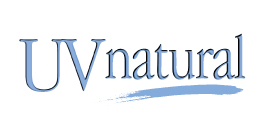By LINDA A. JOHNSON, Associated Press Writer Thu Jun 15, 6:06 PM ET
Think slathering on the highest-number sunscreen at the beach or pool will spare you skin cancer and premature wrinkles? Probably not, if you’re in the sun a lot.
That’s because you don’t need a sunburn to suffer the effects that can cause various types of skin cancer.
Sunscreens generally do a good job filtering out the ultraviolet rays that cause sunburn — UVB rays. But with sunburn protection, many people get a false sense of security that keeps them under the harsh sun much longer. That adds to the risk of eventual skin cancer — both deadly melanoma and the more common and less-threatening basal and squamous cell cancers.
And most sunscreens don’t defend nearly as well against the UVA rays that penetrate deep into the skin and are more likely to cause skin cancer and wrinkles. That’s true even for some products labeled “broad-spectrum UVA/UVB protection.”
Experts say the best protection against UVA is a sunscreen that includes zinc oxide, titanium dioxide or avobenzone. Consumers should also look for those that are water-resistant and have an SPF of 30 or better, indicating strong protection against UVB rays, and apply liberally and often.
More important, limit time in the sun, particularly from 10 a.m. to 4 p.m., and cover up, including wearing a hat and sunglasses.
Often, product labels are confusing or bear misleading claims. For example, the SPF, or sun protection factor, refers only to defense against the less harmful UVB rays.
“I don’t think people understand they’re only getting protection from part of the spectrum,” said Dr. Sandra Read, a spokeswoman for the American Academy of Dermatology. “You’re accumulating this damage and you don’t know it.”
Many sunscreens say little about when to reapply — doctors say at least every two hours and after swimming or sweating. Nor do they say much about how much to use, roughly two tablespoons for an adult.
“Most people who use an SPF 15 get the protection equivalent to an SPF 5 because they put it on” too thinly, said Dr. Martin A. Weinstock, chairman of the
American Cancer Society’s skin cancer advisory group and a Brown University professor.
While a higher SPF number means more protection, the difference is small: SPF 15 blocks about 93 percent of UVB rays and SPF 50, often more expensive, blocks about 98 percent.
Most sunscreens work by reacting chemically with the skin, so they don’t start absorbing damaging rays right away and must be applied a half-hour before going outside, something many labels fail to note.
And claims such as “waterproof” and “sunblock” are unsupported, according to the
Food and Drug Administration, which years ago proposed replacing them with the more-accurate terms “water resistant” and “sunscreen.” Manufacturers, including Neutrogena Suncare maker Johnson & Johnson and Coppertone maker Schering-Plough Corp., say they haven’t complied because the FDA still hasn’t imposed those rules — a delay that’s spawned consumer lawsuits and pressure on the FDA from Congress and the American Cancer Society.
Still, doctors say people shouldn’t abandon sunscreen: They probably should use more.
“Sunscreens do protect against skin cancer,” said Dr. Babar Rao, a dermatologist at Robert Wood Johnson Medical School in New Jersey. “We definitely still need sunscreen, even on a cloudy day.”
Research has shown heavy sunscreen use lowers risk of squamous skin cell cancer, which has a high cure rate if caught early. Another study found heavy sunscreen use in children reduces the number of moles, which can turn cancerous later, Weinstock noted.
In 1999, the FDA announced tougher rules for sunscreen testing and label and ad claims, to take effect in 2001. But the agency put them on hold indefinitely to do more tests, said Dr. Matthew Holman, senior scientist at the FDA’s drug evaluation center.
Last fall, Congress ordered the FDA to produce the new regulations within six months through a provision added by Sen. Chris Dodd, D-Conn., in the FDA appropriations bill.
“Twenty years is long enough for the FDA to ensure that all Americans have equal access to clear, accurate and comprehensive sunscreen labeling as their first line of defense against skin cancer,” Dodd said, referring to how long the agency has worked on new rules.
Holman said proposed rules could be announced this summer, but then there will be lengthy hearings and revisions. “All we can say is really years” until they take effect, he said.
This spring, a San Diego-based law firm got pending lawsuits against makers of the top sunscreens — Coppertone, Neutrogena, Playtex Products’ Banana Boat, Tanning Research Laboratories’ Hawaiian Tropic and Chattem Inc.’s Bullfrog — consolidated into one case in Los Angeles.
Lead lawyer Samuel Rudman, who has called the makers “Fortune 500 snake oil salesmen,” said manufacturers are fraudulent in their label claims.
“Our lawsuit doesn’t say, ‘Don’t use sunscreen.’ It says, ‘Tell the truth.’ If people knew, they would still use it,” Rudman said.
The lawsuit, filed on behalf of 10 California residents, also seeks damages for unspecified injuries and other restitution.
The manufacturers either declined to discuss the lawsuit or said it is without merit.
Despite public education campaigns about avoiding sun exposure and tanning salons, skin cancer incidence is climbing. There will be about 62,000 melanoma cases and 7,900 deaths this year, the American Cancer Society estimates. There are more than 1 million annual cases of squamous and basal skin cancers, and about 2,800 deaths.
___
American Cancer Society: http://www.cancer.org
Skin Cancer Foundation: http://www.skincancer.org
